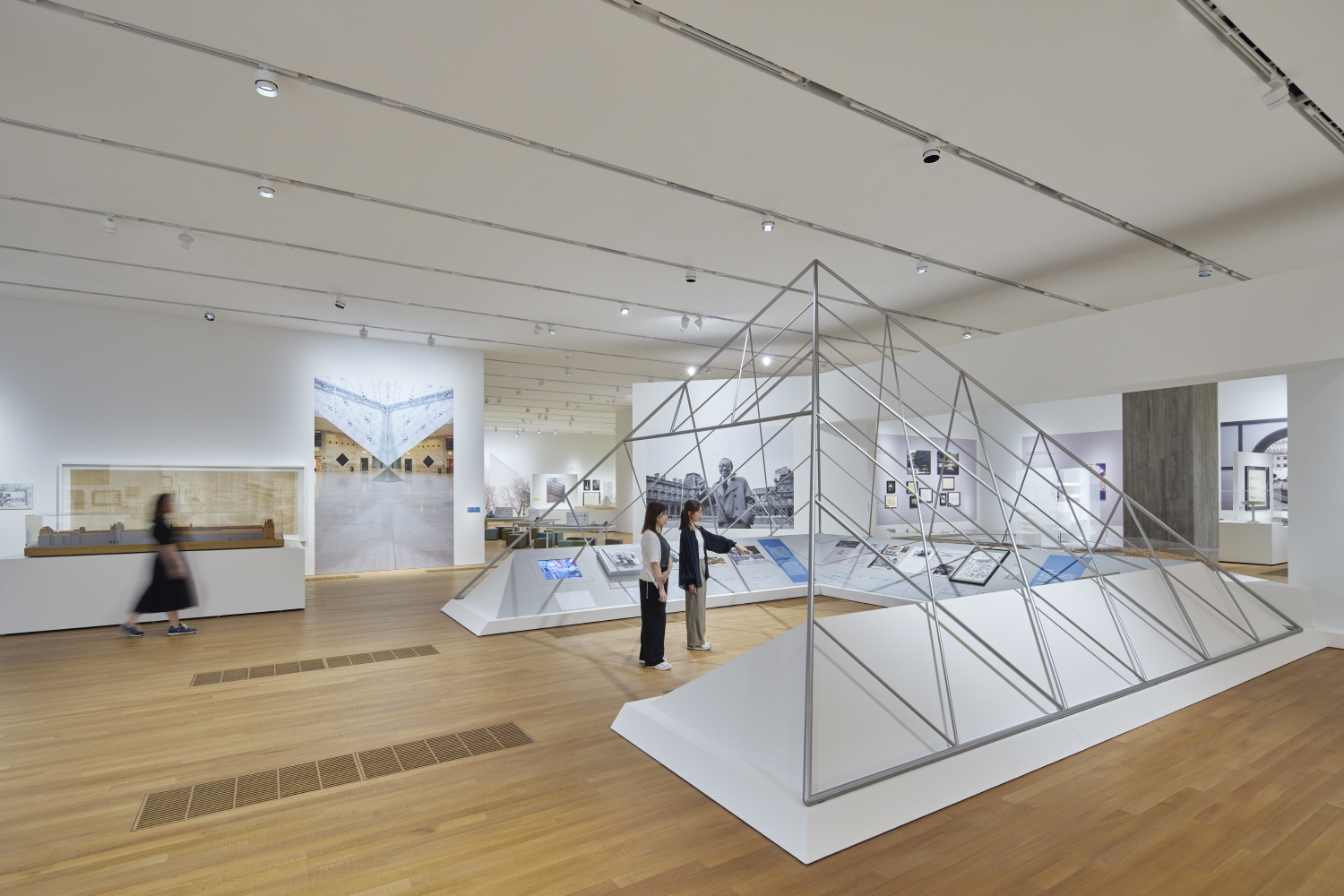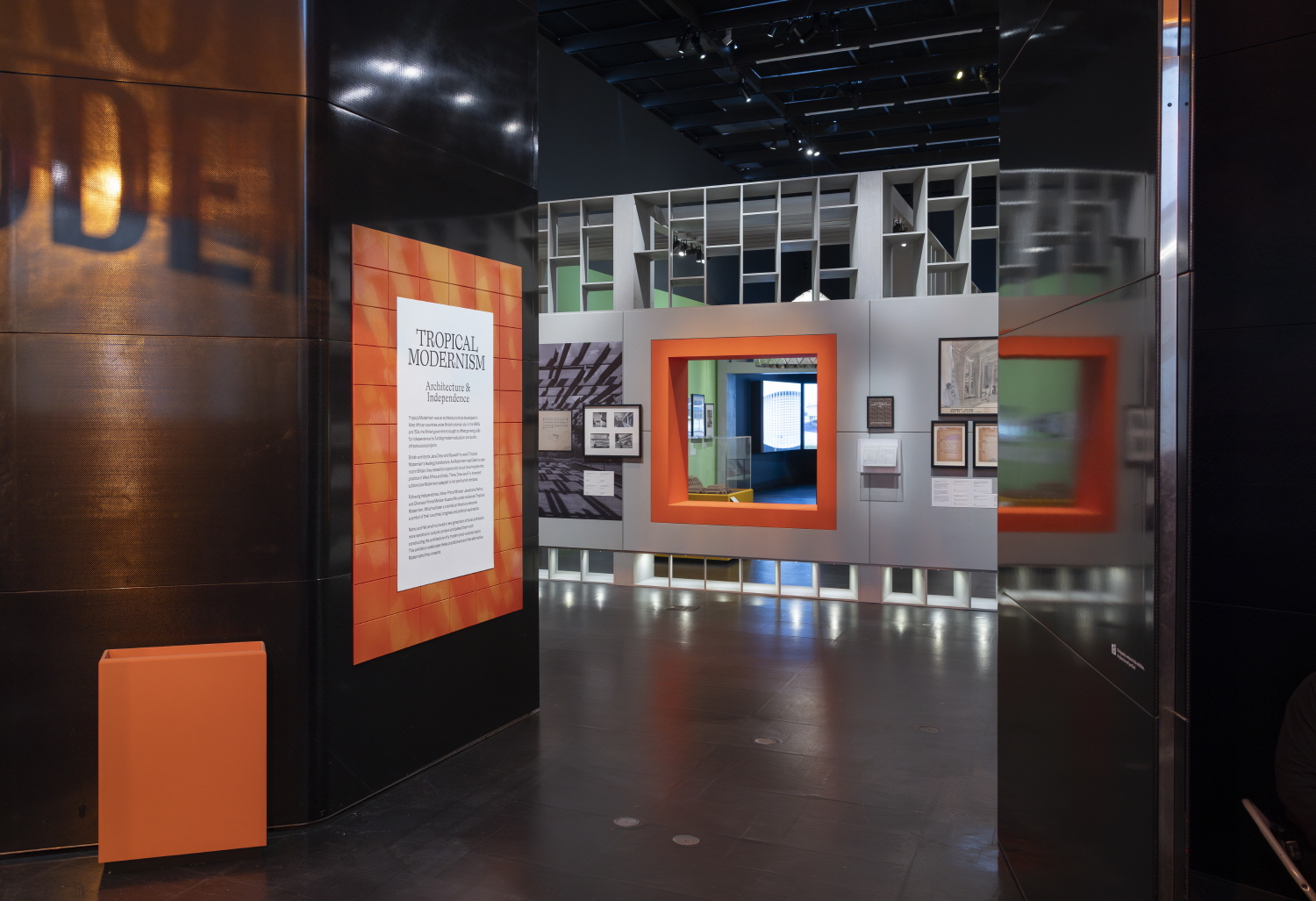‘Toourism’ curated by Architekturzentrum Wien (AzW) is an exhibition highlighting the impact of ‘too much’ tourism on the built environment. The exhibition is intended to examine the phenomenon from a macroscopic view. Instead of presenting typical media, sketches, drawings, and models, the exhibition has been filled with photographs, charts, and text, which might not explicitly relate to architecture. The in-depth analysis of complex dynamics including, short-term rental platforms, local real estate markets, leisure industries, and the rural economy is a testament to how this ambitious exhibition has carefully deduced various implications from different archi-sociological layers. Overall, the exhibition concentrates on the ‘social dimension’ of architecture, the guiding ethos behind AzW.

Exhibition view of ‘I. M. Pei: Life Is Architecture’, / Image courtesy of M+, Hong Kong / ©Lok Cheng
In Asia, M+, Hong Kong is presenting the full-scale retrospective of Ieoh Ming Pei (1917 – 2019), ‘I. M. Pei: Life Is Architecture’. A replica of the iconic Louvre Pyramid stands in the middle of the exhibition. The steel structure suggests a reproduction of the public image of Pei. Although some sections are limited to illustrating typical themes such as cross-cultural foundations, publicness, technological innovation, and reinterpreting tradition through design, other ingenious sections are able to shed new light on the life of Pei. Specifically, from a curatorial perspective, real estate and urban redevelopment are rendered in an interesting way that demands attention and is a conscious reflection on the prejudice towards commercial projects. A section that explores the diplomatic abilities of Pei is also new. It shows how he touched the client’s heart through his political skills, charm, and patience.

Exhibition view of ‘Tropical Modernism: Architecture and Independence’ / Image courtesy of Victoria and Albert Museum, London
Meanwhile, two exhibitions on localism from the U.S. and U.K. are currently on show. First, the National Building Museum in Washington D.C. curates an exhibition called ‘Capital Brutalism’. Brutalism, well known as symbol of the Cold War was widely adopted after World War II. ‘Capital Brutalism’ explores seven buildings in the centre of the ‘Free World’, Washington D.C. Those seven distinct buildings, including the Department of Health & Human Services, the J. Edgar Hoover Building (FBI Headquarters), and the Hirshhorn Museum, have long been controversial works. They are viewed by some as ungainly and ill-mannered eyesores, while others consider them valuable heritage. Noting these contrasting views, the exhibition’s curators, Dr. Angela Person and Ty Cole, state that ‘love or hate Brutalism, the most sustainable building is the one that already exists’. Cole, also participated in the exhibition as an artist. His photographs of bold brutalist buildings invite visitors to approach them from new perspectives.
‘Tropical Modernism: Architecture and Independence’ is currently running at Victoria and Albert Museum, London. In the early 20th century, while modernist architecture dominated Europe, the movement was not well received in the British Isles. Thus, many British architects turned their attention to the architectural opportunities in Britain’s colonies. Huge investment in creating buildings for African nations was intended to offset calls for independence. Accordingly, colonial west Africa became an experimental laboratory for British architects and ‘Tropical Modernism’ is the unique result of the experiment. Unlike preexisting colonial architecture, Tropical Modernism is not predominantly associated with oppression and exploitation. Instead, it has come to symbolise the independence and progressiveness of newly independent countries. In particular, it is an irony of history that activists from India and Ghana wanted to use modern architecture as emblems of their passion for independence.





